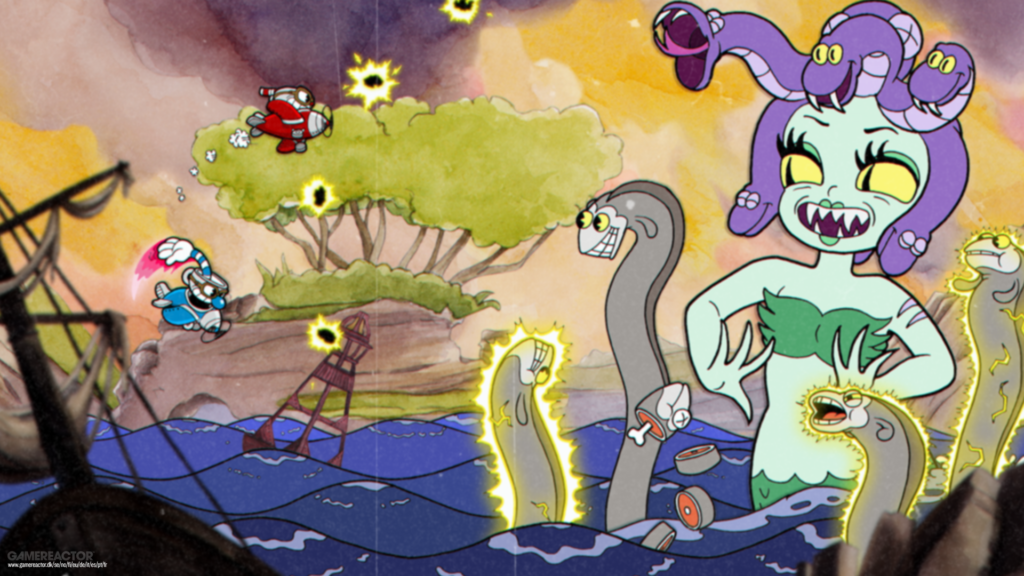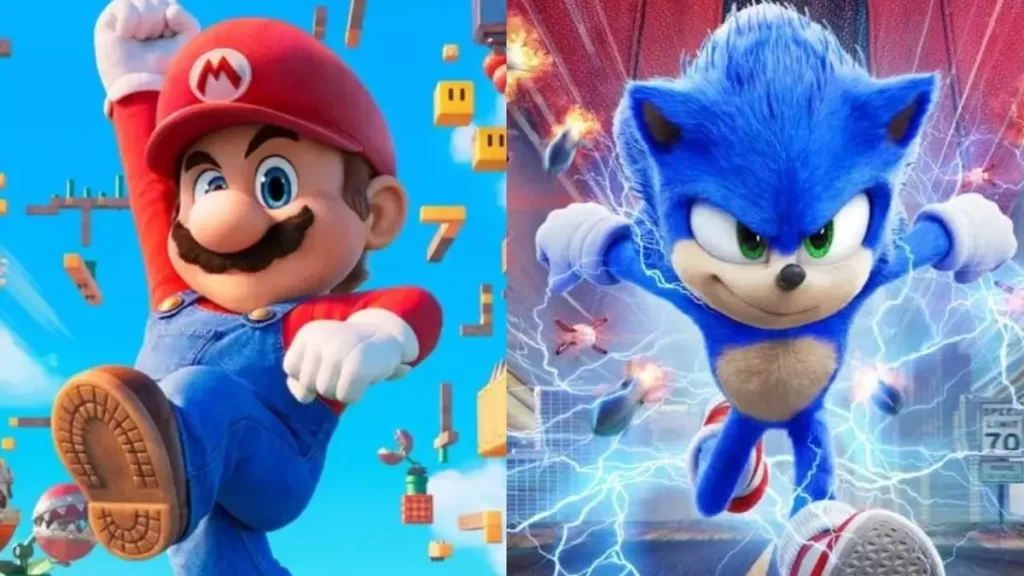Animation in video games is at the core of what makes these virtual experiences so incredible. It represents the work of making characters move, imbuing them with personality, emotion, and weight. Animations also translate your actions into impactful responses, guide your attention through immersive narratives, and ultimately transform static models into inhabitants of a digital world.
But what are the core principles behind fantastic animation in video games? By the end of this article, you’ll have a firm grasp on the subject, gaining the knowledge to appreciate and even help you create animations that will bring your project to the next level.
Put down the controller and have a nice read!
8 core principles of animation in video games
Just like actors bring life to a script, animation brings video games to life. From the subtle sway of a character’s hair to the explosive impact of a spell, animation in video games usually employs the principles listed below:
Timing and spacing
Imagine a character running around with stiff-looking transitions between animations. Not very immersive, right? Timing and spacing work hand-in-hand to ensure animations flow smoothly and feel responsive to player input. Timing refers to the speed of movement, while spacing determines the distribution of frames within the animation.
In video games, timing needs to be carefully balanced. Actions should feel quick and responsive to maintain gameplay engagement, while slower movements can convey weight and impact during powerful attacks or emotional moments.
Spacing, on the other hand, creates the illusion of smooth transitions between different animation frames. By adjusting the number of frames between key poses, animators can control the speed and fluidity of movement, ensuring players feel connected to their characters’ actions.
Think of a character jumping: the initial crouch before the leap needs slower, deliberate timing to build anticipation. The jump itself might utilize faster timing to convey explosiveness. The landing, however, usually benefits from slower timing and extended spacing to show weight impacting the ground, creating a satisfying conclusion to the action.

Squash and stretch
Ever noticed how characters in video games seem to bend and deform slightly during movement? That’s the magic of squash and stretch in action. This principle involves temporarily exaggerating the shape of objects or characters to convey weight, momentum, and flexibility. While it sounds counterintuitive, it adds realism and dynamism to animations.
Imagine a character throwing a punch. Squashing the arm as it retracts builds anticipation – while stretching it during the punch emphasizes power and impact. Similarly, exaggerating the squash and stretch of a jumping character adds weight and elasticity to their movement, making it more visually appealing and believable.
This principle isn’t limited to physical actions. Animators can also use squash and stretch to express emotions – a surprised character’s eyes widening comically or a happy character’s body bouncing slightly, for example. These subtle exaggerations enhance storytelling and emotional connection with the characters.
Anticipation
Have you ever been confused about what an enemy is about to do in a game? The culprit might be a lack of anticipation. This principle refers to the preparatory movement that precedes the main action in animation. It serves two crucial purposes: building tension and creating clear communication with the player.
An anticipation movement, like winding up the arm and shifting their weight before slashing forward, prepares the player for the impending attack. This increases excitement and gives players some time to make informed decisions, leading to more engaging and strategic gameplay.
Follow-through and overlapping action
Animations often feel incomplete or unrealistic if they stop abruptly after the main action. Follow-through and overlapping action address this by adding natural continuity and depth to movement.
The former involves the continuation of movement after the main action has stopped. For example, a character’s hair might continue to sway after they come to a halt, or their clothes might ripple briefly after a jump. These subtle details add a sense of inertia and weight, making the animation in video games more grounded and realistic.
The latter refers to the sequential movement of different parts of an object or character. Imagine a character running. Their legs might be moving faster than their upper body or their arms might swing independently while they focus on their direction. This creates a sense of dynamism and complexity, mimicking the natural way humans and objects move in the real world.
Arcs
Imagine a character throwing a ball. If their arm moves in a straight line, it looks unnatural and robotic. In contrast, an arc-shaped trajectory reflects how humans and objects move in the real world. This is the essence of the arcs principle, which creates a natural sense of flow.
By incorporating it into your animations, characters’ movements will become more believable and visually appealing. By the way, keep in mind that arcs aren’t limited to character movement – camera movements, projectile trajectories, and even environmental effects can benefit from this principle.
Exaggeration
Sometimes, realism isn’t everything. Exaggeration allows animators to amplify specific aspects of movement to convey emotions, reactions, or gameplay cues more effectively. Subtle exaggerations can go a long way in video games.
Picture a character surprised by an enemy attack, their eyes wide open, their body recoiling exaggeratedly, instantly communicating shock and vulnerability. Likewise, a powerful attack might involve excessive windup and follow-through, emphasizing its impact and making it very satisfying for the player.
In League of Legends, for example, many characters’ weapons or body parts might grow moments before the hit connects, only to shrink a frame or two later.
However, remember that this principle must be used with moderation. Overdoing it can break immersion and make the animations feel unrealistic, cartoony, and even silly – which of course is not a problem if you’re chasing after this animation style. Still, finding the right balance between believability and emphasizing key moments is key.
Staging
Staging is like arranging furniture in a room. You place key elements – characters, objects, lighting – to guide the player’s eye where you want it to go. For example, you might have a scene where the camera zooms in on a glimmering chest partially obscured by foliage, hinting at its importance and sparking curiosity.
Another hypothetical situation could involve a character receiving a quest. Staging might position the quest giver prominently, highlight any relevant objects they hold, and use lighting or camera angles to emphasize their words.
This intentional arrangement isn’t just about highlighting action. It can also convey crucial information and objectives and tell the player what’s going on, even if directions are subtle.
Appeal
Beautiful graphics and detailed animations are impressive, but what truly makes a character stand out is their appeal. This principle is all about the visual attractiveness, personality, and charisma of characters and animations.
Sure, one might argue that appeal is subjective, but it’s undeniable that characters with distinct visual designs, expressive animations, and relatable personalities resonate more deeply with players.
Think of iconic video game characters like Link, Mario, or Lara Croft. Their unique designs, signature moves, and expressive animations contribute significantly to their enduring popularity and appeal.
By focusing on designing characters with distinct personalities and animations that evoke reactions, you can create memorable experiences that stay with players long after they finish the game.

Animation in video games: conclusion
All in all, animation in video games is one of the most important features of a game, breathing life and personality into digital worlds. By understanding the core principles behind the process, developers can take their projects to the next level, creating unforgettable experiences and increasing immersion.
But what about you? Looking for some help with the development of your game? We at Main Leaf are here to provide unique, custom-tailored solutions specific to your project.
Whether you need assistance with animation, game design, game programming, or implementing cutting-edge technology, we’ve got you covered. Contact us below to get started with Main Leaf!

